Expert Techniques for Removing Lint Build-Up in Dryer Vents
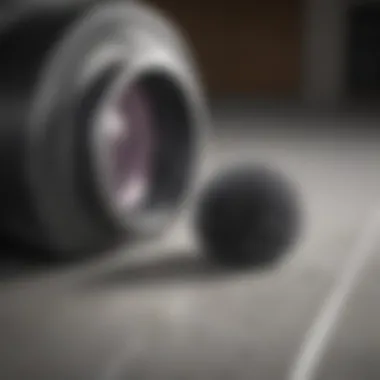
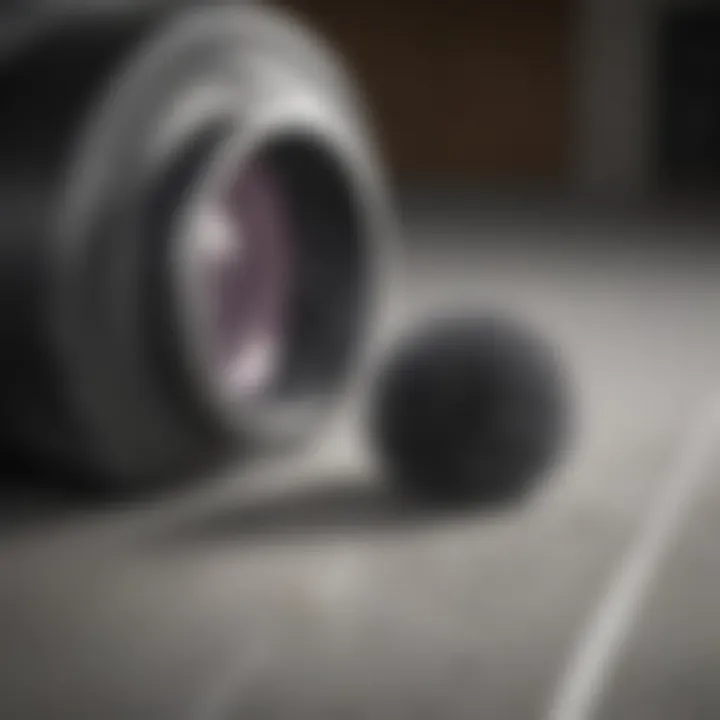
Lint build-up in dryer vents can lead to inefficiencies and potential hazards. It's crucial to prioritize regular maintenance to ensure optimal performance and safety in your dryer system. By understanding the impact of clean dryer vents and implementing effective cleaning techniques, you can enhance the efficiency of your appliance while reducing the risk of fire hazards.
Key Points Discussed
In this comprehensive guide, we will delve into the importance of maintaining clean dryer vents and the impact of lint build-up on performance. We will explore step-by-step cleaning techniques to help you effectively remove lint and ensure the smooth operation of your dryer system.
The Importance of Clean Dryer Vents
Clean dryer vents play a critical role in the efficiency and safety of your dryer. Lint accumulation over time can restrict airflow, causing the appliance to work harder and potentially overheat. This not only leads to longer drying times but also poses a fire risk. By regularly cleaning your dryer vents, you can prevent these issues and prolong the lifespan of your appliance.
Understanding Lint Build-Up
Lint, a byproduct of drying clothes, is a highly flammable material that can accumulate in the dryer vent over time. As lint builds up, it creates blockages that impede airflow, leading to inefficient drying cycles and increasing the risk of fires. Regularly removing lint is crucial to maintain proper ventilation and prevent dangerous scenarios.
Step-by-Step Cleaning Techniques
- Disconnect the Dryer: Before beginning the cleaning process, ensure the dryer is unplugged to prevent accidents.
- Remove the Vent Cover: Locate the vent cover outside your home and carefully remove it to access the vent opening.
- Use a Vacuum: Attach a vacuum or lint brush to clear out lint from the vent. You can also use a dryer vent cleaning kit for more thorough cleaning.
- Inspect the Vent: Check for any signs of damage or blockages within the vent. Clear any debris to maintain proper airflow.
- Reassemble and Test: Once the vent is clean, reattach the vent cover, plug in the dryer, and conduct a test run to ensure everything is functioning correctly.
Synthesizing the Information
Maintaining clean dryer vents is essential for both appliance efficiency and safety. By understanding the significance of lint build-up and following the recommended cleaning techniques, you can prolong the life of your dryer while reducing the risk of fires. Regular maintenance should be a priority for every homeowner to ensure a functional and safe laundry environment.
Introduction
Maintaining clean dryer vents is a crucial aspect of household maintenance that is often overlooked. By ensuring that your dryer vents are free from lint build-up, you can significantly enhance the efficiency and safety of your dryer system. This article will delve into the essential methods for effectively removing lint from dryer vents, providing you with a comprehensive guide to keep your dryer running smoothly.
Understanding the Significance of Clean Dryer Vents
Proper understanding of why clean dryer vents are essential can help you appreciate the significance of regular maintenance. Firstly, the impact of lint build-up on dryer efficiency cannot be understated. When lint accumulates in the vents, it obstructs the airflow, forcing the dryer to work harder to dry your clothes. This not only prolongs drying times but also leads to increased energy consumption. Addressing this issue proactively is key to maintaining optimal dryer performance.
Secondly, the fire hazard risks associated with clogged vents are alarming. Lint is highly flammable, and if excess lint accumulates in the dryer vents, it can easily ignite during the drying process. This poses a serious safety risk to your home and loved ones. Regular vent cleaning significantly reduces the likelihood of lint-related fires, ensuring a safer environment for your household.
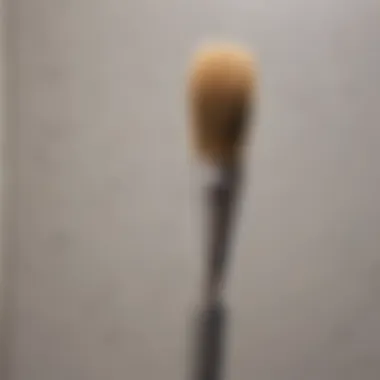
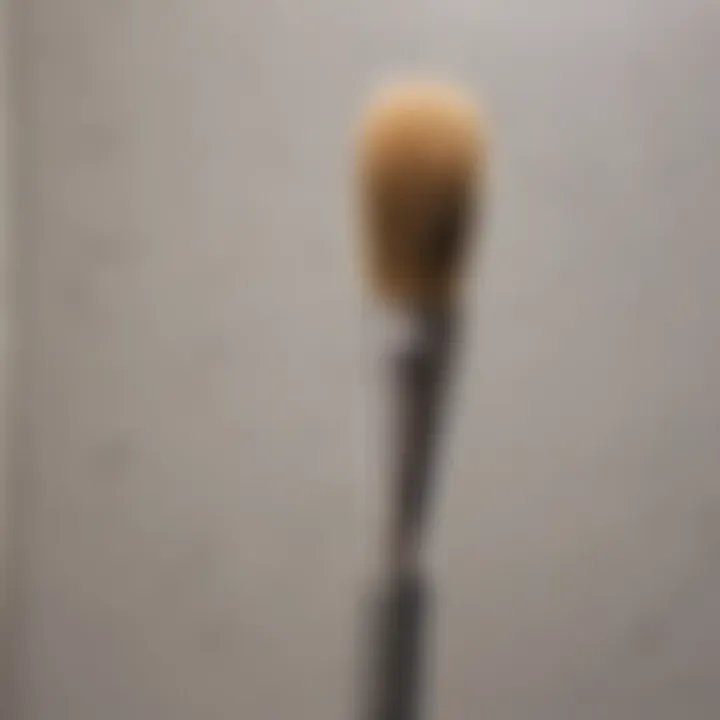
Lastly, the benefits of regular vent maintenance go beyond just efficiency and safety. By keeping your dryer vents clean, you extend the lifespan of your dryer and minimize the need for costly repairs. Additionally, having clean vents improves air quality indoors by preventing lint and dust particles from being circulated back into your living spaces. Prioritizing regular vent maintenance is a small investment that yields significant long-term benefits for both your dryer and your home.
Recognizing Signs of Lint Build-Up
Lint build-up in dryer vents can lead to various issues that can impact the efficiency and safety of your dryer. Recognizing the signs of lint accumulation is crucial in ensuring your dryer operates optimally. One key indicator is prolonged drying times, where clothes take longer to dry than usual due to restricted airflow caused by lint blockages. This not only prolongs the laundry process but also increases energy consumption, leading to higher utility bills.
Another common sign to watch out for is burning smells during drying cycles, which can be a warning that lint trapped in the vent system is overheating and poses a fire hazard risk. The distinct odor of burning lint should alert you to the urgency of vent cleaning to prevent potential fire incidents and ensure the safety of your home.
Visible lint around the dryer area is also a significant red flag signaling lint build-up in the vent system. If you notice lint collecting near the dryer, on the floor, or around the exhaust vent, it indicates that lint is not being adequately expelled through the vent duct. This visual cue should prompt immediate action to clean the vents and prevent further lint accumulation that can compromise dryer performance and safety.
Common Indicators of Clogged Dryer Vents
Prolonged Drying Times:
Prolonged drying times are a clear indication of a clogged dryer vent. When your clothes consistently take longer to dry, it signifies that the vent is not allowing proper air circulation, affecting the drying efficiency. Addressing this issue promptly is essential to prevent energy wastage and potential overheating problems that could damage your dryer.
Burning Smells During Drying Cycles:
The presence of burning smells during drying cycles is a serious warning sign of lint accumulation in the dryer vent. Ignoring this smell can lead to a fire hazard due to the flammability of lint. Immediate action, such as cleaning the vent system thoroughly, is necessary to eliminate the risk of dryer fires and ensure a safe laundry environment.
Visible Lint Around the Dryer Area:
Observing lint accumulation around the dryer or exhaust vent area is a visible confirmation of lint build-up in the venting system. This visible lint serves as a clear indicator that the vent is obstructed and requires cleaning to prevent airflow restrictions and potential fire hazards. Regularly monitoring and addressing visible lint can help maintain a safe and efficient dryer system.
Tools and Equipment Needed for Vent Cleaning
Maintaining clean dryer vents requires the utilization of specific tools and equipment to effectively remove lint build-up. The importance of having the right tools cannot be overstated, as it directly impacts the efficiency and safety of your dryer system. By investing in quality tools for vent cleaning, you can ensure optimal performance and mitigate potential fire hazards.
When it comes to selecting the necessary equipment for vent cleaning, consideration must be given to the effectiveness of each tool in achieving thorough lint removal. The tools and equipment needed typically include a vent cleaning brush, a vacuum with an extension hose, and a screwdriver or hex driver. Having these items on hand is crucial for a comprehensive and successful vent cleaning process.
Essential Items for Removing Lint
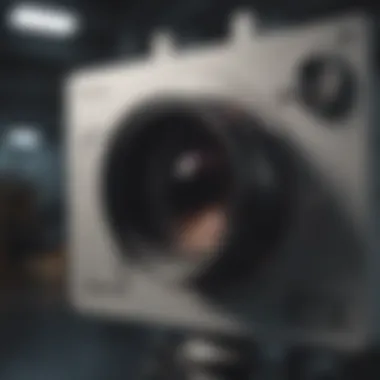

Vent Cleaning Brush
The vent cleaning brush is a fundamental tool for removing lint build-up in dryer vents. Its design allows for reaching deep into the vent ducts to dislodge and extract accumulated lint effectively. The key characteristic of a vent cleaning brush lies in its flexible and long bristles, which can adapt to different vent sizes and configurations. This makes it a versatile and practical choice for ensuring thorough vent cleaning. Additionally, the unique feature of a vent cleaning brush is its ability to bend and maneuver through curved ducts, aiding in the removal of stubborn lint obstructions. While the vent cleaning brush excels in removing lint, it may have limitations with extremely compacted debris and may require additional tools for such cases.
Vacuum with Extension Hose
A vacuum with an extension hose plays a vital role in vent cleaning by sucking up dislodged lint and debris. Its key characteristic lies in the powerful suction capabilities that allow for efficient removal of lint from the vent system. The extension hose provides extended reach, enabling thorough cleaning even in hard-to-access areas. Moreover, the unique feature of a vacuum with an extension hose is its ability to capture fine particles, preventing them from circulating back into the dryer or home environment. While highly effective in lint removal, this tool may have limitations with very dense lint accumulations that could clog the hose or impede suction efficiency.
Screwdriver or Hex Driver
In vent cleaning, a screwdriver or hex driver is essential for disassembling dryer components to access hidden areas with lint accumulation. The key characteristic of a screwdriver or hex driver is its ability to loosen and remove screws holding the vent system in place, facilitating thorough cleaning. This tool is crucial for dismantling the dryer vent cap, allowing for deeper inspection and cleaning of the vent opening. The unique feature of a screwdriver or hex driver is its versatility in disassembling various dryer parts, enabling comprehensive vent maintenance. However, it may have limitations with screws that are tightly secured or located in hard-to-reach spots, requiring additional effort for removal.
Step-by-Step Cleaning Process
To maintain clean dryer vents effectively, it is crucial to follow a step-by-step cleaning process. This ensures optimal performance and reduces the risks associated with lint build-up. By cleaning dryer vents regularly, you can improve dryer efficiency, minimize fire hazards, and prolong the lifespan of your appliance. The step-by-step cleaning process outlined in this article covers essential techniques to remove lint build-up thoroughly.
Preparing for Vent Cleaning
Before starting the cleaning process, it is important to prepare adequately. This involves unplugging the dryer to ensure safety and ease of access. By disconnecting the dryer from the power source, you eliminate the risk of electric shock and create a safe working environment. Moving the dryer away from the wall is also necessary to access the vent system properly. This step allows you to inspect the vent opening and duct for any signs of lint accumulation.
Unplugging the Dryer
Unplugging the dryer is a critical step in the vent cleaning process. By disconnecting the appliance from the power outlet, you prevent potential accidents and ensure personal safety. Unplugging the dryer also allows you to work on the vent system without any electrical interference. This simple yet crucial task sets the foundation for effective vent cleaning and maintenance.
Moving the Dryer Away from the Wall
Moving the dryer away from the wall is essential to access the back of the appliance and the vent system. This step provides clear visibility of the vent opening and allows you to navigate around the dryer easily. By creating space between the dryer and the wall, you can effectively clean the lint trap, vent opening, and duct. Moving the dryer ensures thorough vent maintenance and enhances the overall efficiency of the appliance.
Cleaning the Lint Trap and Vent Opening
Cleaning the lint trap and vent opening is a key aspect of maintaining clean dryer vents. By removing lint from the trap, you prevent airflow blockages and improve drying performance. Vacuuming the vent opening further removes trapped lint and debris, ensuring optimal ventilation and reducing fire risks.
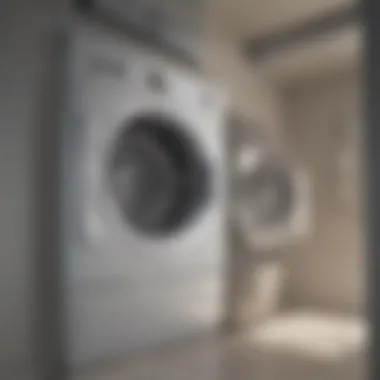
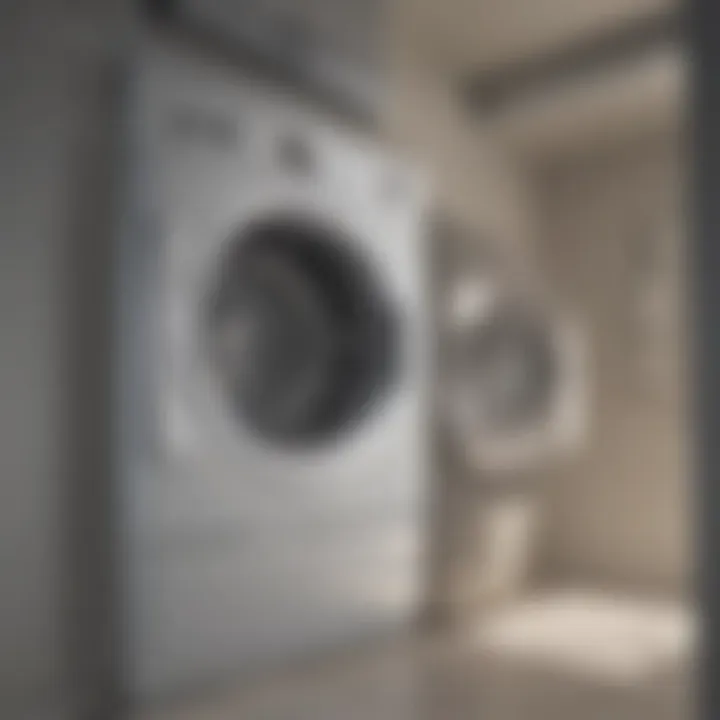
Removing Lint from the Trap
Removing lint from the trap is a simple yet important task. By clearing the lint trap regularly, you prevent lint build-up in the vent system and maintain efficient airflow. This step helps improve drying times and reduces the workload on the dryer. Regularly removing lint from the trap is essential for preventing clogs and optimizing dryer performance.
Vacuuming the Vent Opening
Vacuuming the vent opening is a crucial step in eliminating lint build-up. By using a vacuum cleaner with an extension hose, you can reach deep into the vent and remove accumulated lint. This process helps maintain a clear pathway for hot air to escape, minimizing the risk of overheating and potential fires. Vacuuming the vent opening improves the overall safety and efficiency of the dryer system.
Vent Duct Cleaning
Cleaning the vent duct is a thorough method to remove lint and debris from the entire vent system. By utilizing a vent cleaning brush, you can dislodge stubborn lint particles from the duct walls. Vacuuming the duct after brushing ensures that all loosened debris is completely removed, promoting unrestricted airflow and reducing fire hazards.
Using a Vent Cleaning Brush
Using a vent cleaning brush is effective in dislodging compacted lint from the vent duct. The brush's bristles can reach tight spaces within the duct and scrape off accumulated debris. This process improves airflow and prevents lint accumulation, enhancing dryer performance and safety. Regular use of a vent cleaning brush is recommended to maintain clean and efficient dryer vents.
Vacuuming the Duct
Vacuuming the duct after brushing is essential to remove dislodged lint and debris. By suctioning out the loosened particles, you prevent them from resettling in the duct and causing blockages. Vacuuming the duct ensures a thorough clean and promotes optimal vent efficiency. This step is crucial in preventing fires and maintaining the overall functionality of the dryer system.
Additional Tips for Maintaining Clean Vents
In this section, we will delve deeper into additional tips for maintaining clean vents, highlighting crucial practices to ensure optimal dryer performance and safety. These tips are essential for preventing lint build-up and maintaining the efficiency of your dryer system. By following these recommendations, you can extend the lifespan of your dryer, reduce the risk of fire hazards, and improve overall drying performance.
Best Practices for Preventing Lint Build-Up
Regularly Inspecting and Cleaning the Vent System
Regularly inspecting and cleaning the vent system plays a pivotal role in preventing lint build-up and maintaining a safe dryer environment. This practice involves routine checks of the vent system for any signs of blockages or excessive debris. By examining the vents regularly, you can identify and address potential issues before they escalate, ensuring efficient airflow and reducing the risk of lint accumulation. The key characteristic of this practice is its proactive approach towards dryer maintenance, contributing significantly to the overall functionality and safety of the system. Regular inspection and cleaning help in preserving the longevity of the dryer by preventing lint-related malfunctions and enhancing energy efficiency. Although the process requires time and dedication, the benefits of improved dryer performance and reduced fire hazards make it a valuable investment in ensuring a well-maintained dryer system.
Avoiding Overloading the Dryer
Avoiding overloading the dryer is a fundamental aspect of preventing lint build-up and ensuring effective drying cycles. By adhering to the recommended load capacity of the dryer, you can prevent excessive lint production and reduce the likelihood of blockages in the vent system. Overloading the dryer can inhibit proper airflow, leading to inefficient drying and increased lint accumulation. The key characteristic of this practice is its simplicity yet profound impact on dryer performance. By loading the dryer within its capacity limits, you can promote adequate air circulation, minimize lint build-up, and enhance the overall efficiency of the drying process. While it may require a mindful approach to laundry loads, avoiding overloading the dryer proves to be an essential strategy in maintaining clean vents and optimizing drying performance.
Checking Ventilation System for Blockages
Checking the ventilation system for blockages is a critical step in preventing lint build-up and maintaining proper airflow within the dryer system. This practice involves inspecting the ventilation ducts and exhaust openings for any obstructions that may impede the flow of air. By identifying and removing blockages promptly, you can prevent lint accumulation, reduce the risk of overheating, and ensure optimal dryer operation. The key characteristic of this practice is its focus on unobstructed airflow, which is essential for efficient drying and preventing fire hazards. Regularly checking the ventilation system for blockages enables you to address potential issues early on, preserving the integrity of the dryer and promoting safe drying conditions. While it requires periodic maintenance and attention to detail, this practice is indispensable in safeguarding against lint build-up and enhancing the overall performance of the dryer system.



